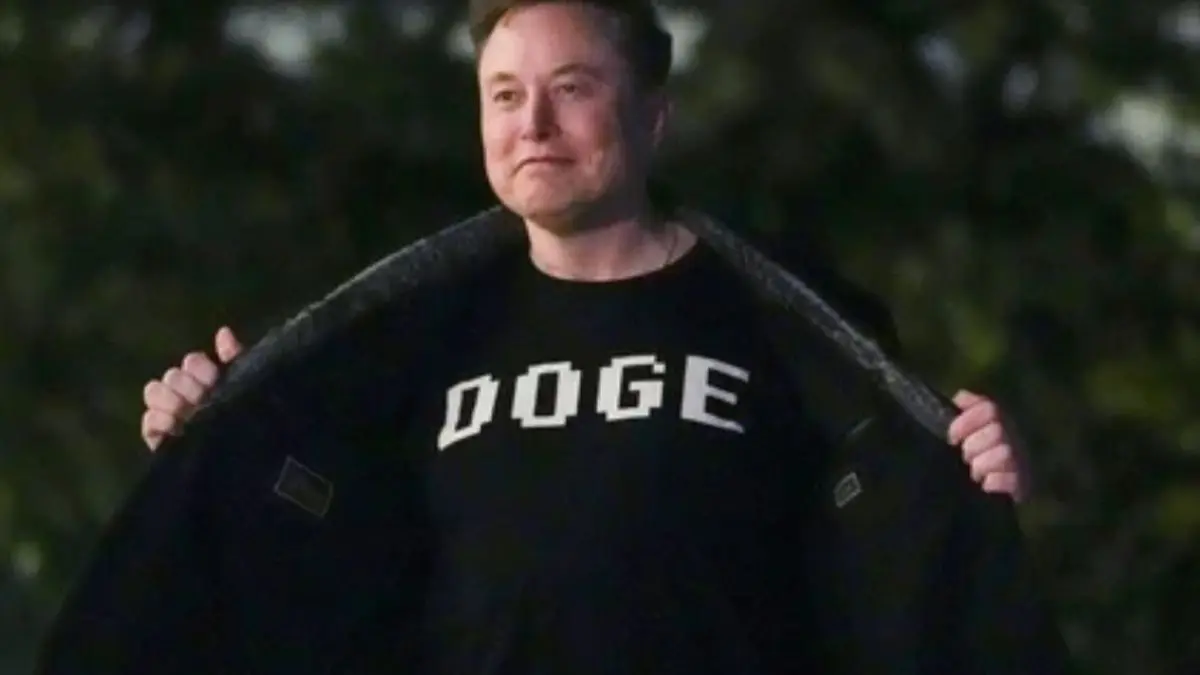Updated 29 May 2025 at 10:20 IST
Did Elon Musk Fail at DOGE? 5 Things That May Have Gone Wrong During His Tenure
Elon Musk’s surprise resignation from the Trump administration raises questions about his impact on the Department of Government Efficiency (DOGE). Despite aggressive cost-cutting, criticism, workforce chaos, and political clashes marked his short tenure. This deep-dive explores five key facts behind Musk's controversial stint and sudden exit from Washington’s bureaucracy.
- Republic Business
- 4 min read

Elon Musk has abruptly stepped down as a special government employee in the Trump administration, ending his high-profile and controversial leadership of the Department of Government Efficiency (DOGE). Musk’s exit, announced via his platform X (formerly Twitter), comes amid mounting internal resistance, policy clashes, and escalating public backlash.
“As my scheduled time as a Special Government Employee comes to an end, I would like to thank President @realDonaldTrump for the opportunity to reduce wasteful spending,” Musk posted on X.
“The @DOGE mission will only strengthen over time as it becomes a way of life throughout the government.”
The announcement came without a formal conversation with President Trump. According to Reuters, the decision to offboard Musk was made “at a senior staff level.”
The BBC reported that Musk was officially being phased out on Wednesday night. His temporary federal role allowed him to serve for 130 days annually — a tenure that aligned with his May departure — but recent developments suggest the resignation was far from routine.
1. An Unplanned Exit Amid Internal Friction
While Musk’s government stint was time-bound, the nature of his exit suggests friction behind the scenes. Sources told Reuters that Musk didn’t speak to Trump before leaving. This comes just a day after Musk criticized Trump’s flagship budget proposal — a $2 trillion package of tax breaks and defence spending.
“I think a bill can be big or it could be beautiful,” Musk told CBS. “But I don’t know if it could be both.”
He added that the legislation “undermines the work” of DOGE, calling it contradictory to his mission of reducing government expenditure.
2. Missed Targets and Shifting Promises
When Musk joined DOGE, he pledged to cut at least $2 trillion from the federal budget. This figure was later halved and eventually reduced to a $150 billion target. Despite aggressive downsizing, these figures remain unverified, and unfulfilled by Musk’s own shifting goals.
3. Mass Layoffs, Legal Hurdles, and Chaos
DOGE’s most visible impact was a wave of layoffs. Over 260,000 federal civilian workers — out of 2.3 million — were either terminated or accepted redundancy offers under Musk’s oversight. However, some of these cuts were later blocked by federal judges, who ordered reinstatements due to procedural violations.
Instances even included mistaken firings of personnel in critical roles, such as those in the US nuclear program. “Doge is just becoming the whipping boy for everything,” Musk told the Washington Post in Texas earlier this week. “Something bad would happen anywhere, and we would get blamed for it even if we had nothing to do with it.”
Advertisement
4. Corporate Fallout and Tesla Turmoil
Musk’s role in Washington coincided with a turbulent quarter for Tesla. The electric carmaker reported a 13% decline in deliveries — the largest drop in its history. Its stock value plunged by as much as 45% before partially rebounding. Tesla has declined to offer a growth forecast, citing “changing political sentiment.”
Protests and vandalism — targeting Tesla showrooms and charging stations — have increased. Activist groups called for boycotts, prompting US Attorney General Pam Bondi to warn that vandalism will be treated as “domestic terrorism.”
On Tesla’s April earnings call, Musk admitted: “The time I allocate to Doge will drop significantly,” adding he’d be “allocating far more of my time to Tesla.”
Advertisement
5. Political Spending and a Return to Business
Musk had become one of Trump’s largest political donors, pouring nearly $300 million into Republican campaigns last year. But at an economic forum in Doha, Qatar, on Tuesday, he announced a strategic withdrawal from politics and a renewed focus on Tesla.
“I’m committed to being the leader of Tesla for the next five years,” he said.
He also signalled a rollback of his political contributions, a move that aligns with his exit from public service.
Read More - What Really Triggered Tesla CEO’s Exit From DOGE?
A Mission Too Ambitious or a Political Misstep?
While Elon Musk’s tenure at DOGE will be remembered for dramatic shakeups and lofty goals, the mission’s incomplete delivery raises critical questions about feasibility, governance, and political alignment. Was Musk’s vision too radical — or was the system too entrenched for real change?
Either way, the numbers tell a sobering story. Promised savings weren’t met, workforce morale collapsed, and legal setbacks riddled the process. As Musk retreats from Washington, DOGE’s future — much like its architect’s reputation in public service — remains uncertain.
(With Inputs From BBC)
Published By : Gunjan Rajput
Published On: 29 May 2025 at 10:20 IST
